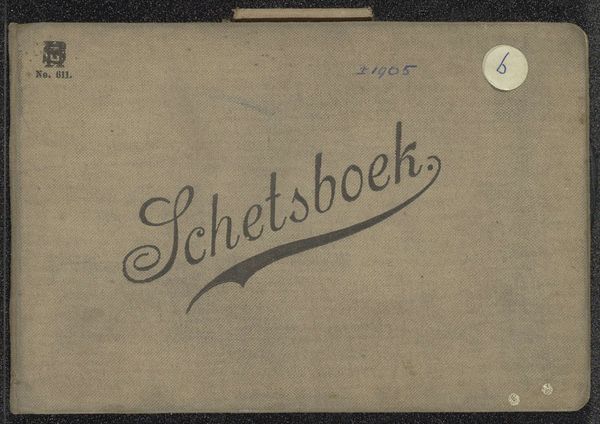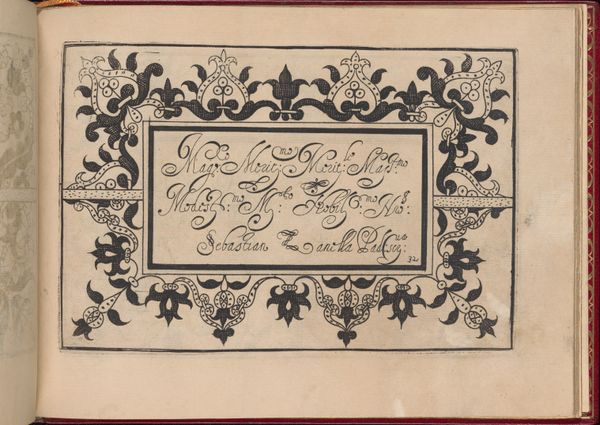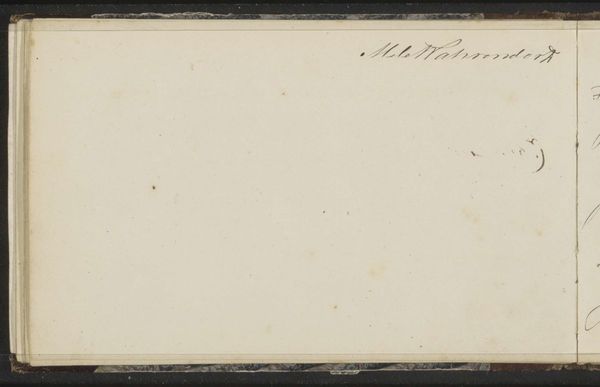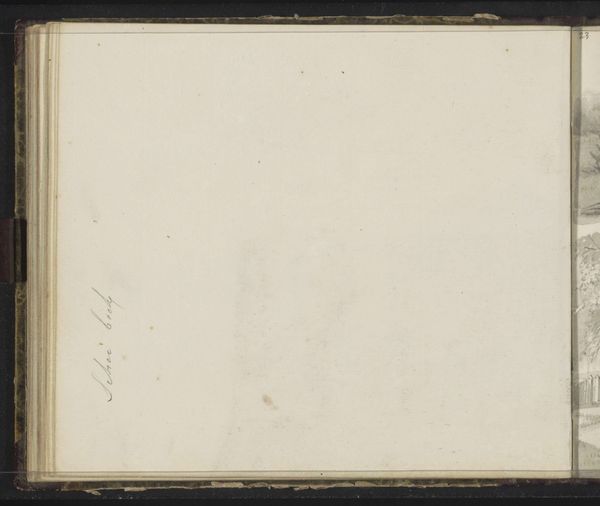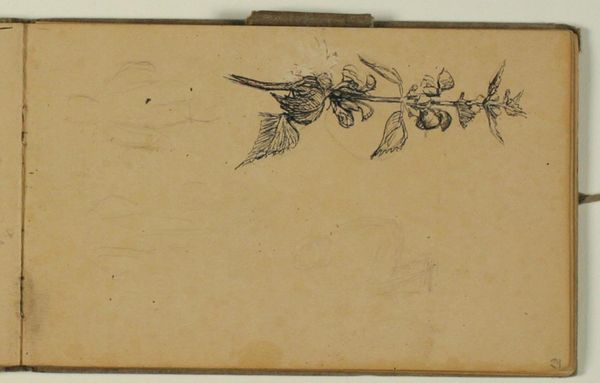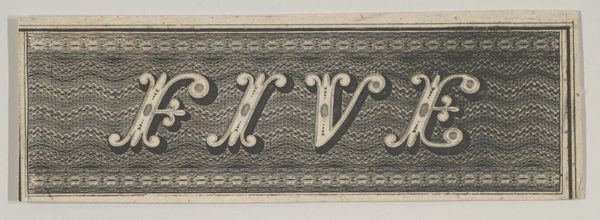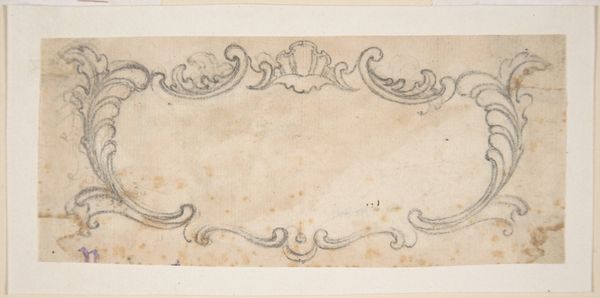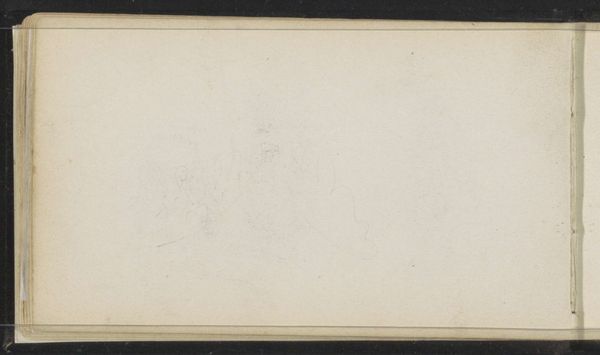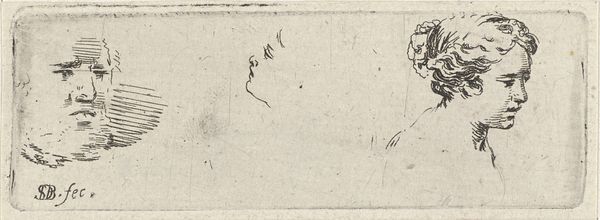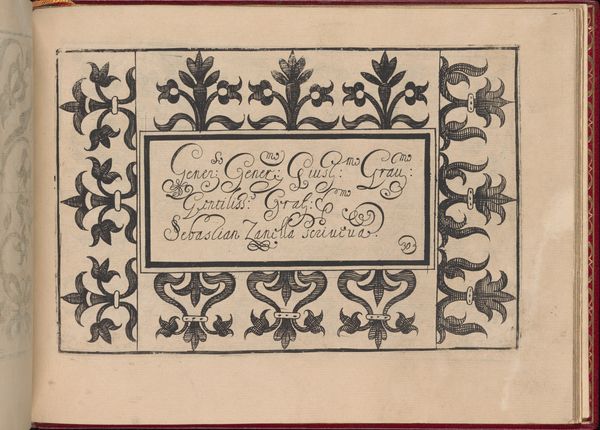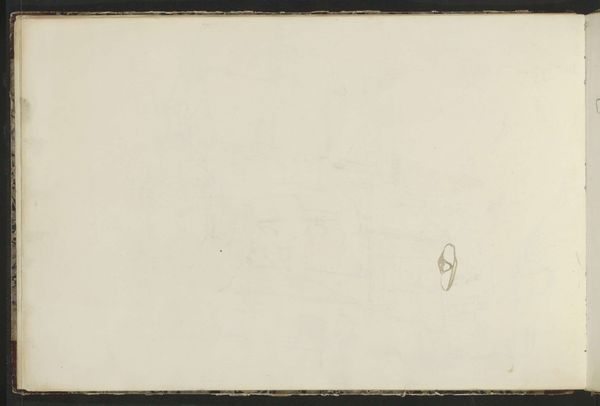
drawing, graphic-art, paper, typography, ink
#
drawing
#
graphic-art
#
art-nouveau
#
script typography
#
hand-lettering
#
hand drawn type
#
hand lettering
#
paper
#
personal sketchbook
#
typography
#
ink
#
hand-drawn typeface
#
fading type
#
ink colored
#
sketchbook drawing
#
sketchbook art
Dimensions: height 236 mm, width 308 mm, thickness 9 mm, width 614 mm
Copyright: Rijks Museum: Open Domain
Curator: The work we're looking at today is a sketchbook, or "Schetsboek" in Dutch, attributed to Ferdinand Oldewelt, dating from around 1908 to 1923. It features 35 pages filled with his drawings. Editor: My first thought is of delicate balance. The faded ink on the aged paper gives the cover a ghostly yet elegant appearance, and the calligraphic title almost floats on the page. Curator: That calligraphic style aligns with the Art Nouveau movement, a period defined by organic motifs and stylized forms. Oldewelt clearly embraced this aesthetic, using flowing lines and curvilinear shapes in the hand-lettering. This was a style popular for public advertising, so this work gives us a glimpse into the creative practices and influence in that period. Editor: Indeed. Observe how the weight and density of the drawn lines vary. The ink is darker toward the base and gradually thins to an almost ethereal quality as it moves upwards. There's a beautiful contrast created by this gradual fading. Also the use of the color in ink is striking, something uncommon at the time. Curator: Sketchbooks such as this served as vital tools for artists, providing a space to explore ideas, refine techniques, and document the world around them. They are an artifact of creation, showing not only the final intention of a work of art, but the background thought. Editor: There's a definite sense of intimacy as well. The faded inscription almost whispers to us across the decades. One can almost imagine the artist carefully practicing and perfecting these letterforms. The scale gives it such a personal connection. Curator: Absolutely. And consider the historical context: the early 20th century, a period of tremendous social and political change, particularly in Europe. Artists like Oldewelt, who practiced within advertising, navigated these changes. The stylistic qualities are not merely aesthetic; they reflect evolving cultural values and anxieties. Editor: Well, delving into the nuances of this sketchbook has certainly deepened my appreciation for both its visual delicacy and its historical significance. Curator: Agreed, seeing the fusion between the artistry and historic circumstance in Oldewelt's sketchbook reveals how artworks capture moments in history.
Comments
No comments
Be the first to comment and join the conversation on the ultimate creative platform.
